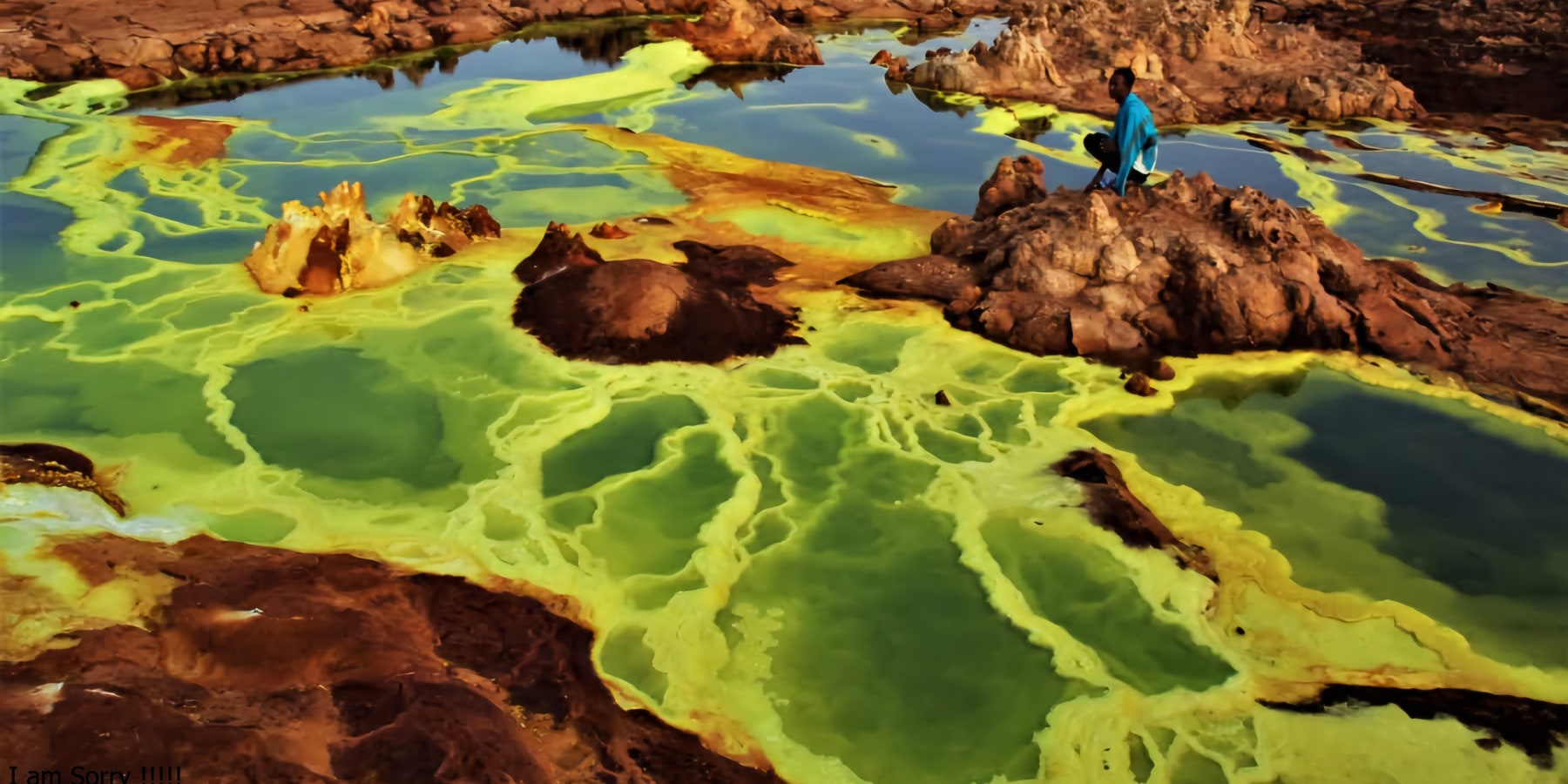
The Danakil Depression, located in the northeastern part of Ethiopia, is one of the Earth's most extreme and fascinating landscapes. This geological wonder, situated in the Afar Triangle, lies at the junction of three tectonic plates—the African, Arabian, and Eurasian plates. It is a vast, arid area known for its incredible geological features, including salt flats, sulfur springs, and active volcanoes, making it a must-visit destination for adventurous travelers.
Geography and Climate
The Danakil Depression holds the distinction of being one of the hottest places on Earth, with average temperatures exceeding 40°C (104°F) year-round. In certain areas, temperatures can climb as high as 50°C (122°F) during summer. This intense heat, coupled with minimal rainfall, creates an inhospitable environment, yet it is precisely this harshness that shapes its unique beauty.
The depression itself is a low-lying region, with parts of it being below sea level. It is home to vast expanses of salt flats, where the ground is covered with a crust of salt deposits, and is surrounded by towering volcanic mountains, lava lakes, and the shimmering hot springs that bubble with sulfuric minerals.
Sulfur Springs: A Vibrant and Toxic Landscape
One of the most eye-catching features of the Danakil Depression is the presence of sulfur springs. These springs emit gases and vapors that are rich in sulfur, creating a vivid yellow and green landscape. The sulfur deposits not only give the area its striking colors but also contribute to the region’s toxic environment.
The air in the Danakil Depression is thick with the smell of sulfur, which is emitted by the hot springs and fumaroles (vents that release gases from the Earth's interior). The high concentration of sulfur compounds makes the area dangerous to explore without proper precautions. The vivid yellow deposits are both a beautiful and hazardous feature of this landscape, offering a glimpse into the Earth's volatile nature.
Salt Flats: The "Sea of Salt"
The salt flats of the Danakil Depression are another remarkable feature. These vast stretches of salt crust are remnants of ancient lakes that once filled the depression. Over time, the evaporation of water left behind a thick layer of salt. The salt flats create a dazzling white landscape that stretches as far as the eye can see.
For centuries, the Afar people have mined salt from the flats, a practice that remains a vital part of their livelihood. Salt is extracted using traditional methods, with workers carefully cutting large blocks of salt from the ground. These blocks are then transported by camel caravans to be sold in local markets.
The Active Volcanoes of Erta Ale
Erta Ale, one of the most active volcanoes in the Danakil Depression, is another key attraction in the region. Known for its permanent lava lake, Erta Ale offers a truly surreal experience for travelers brave enough to hike to its summit. The volcano constantly emits plumes of smoke, and its molten lava creates a dramatic, glowing spectacle visible from miles away. Due to its active nature, Erta Ale is a dangerous but awe-inspiring destination for those seeking an extreme adventure.
The Afar People: Living in Harmony with the Harsh Landscape
The Afar people, the indigenous group of the Danakil Depression, have adapted to the harsh environment for centuries. Known for their resilience and resourcefulness, the Afar people mine salt from the flats, herd camels, and live in traditional huts made from materials that provide some shelter from the extreme heat.
Despite the challenging living conditions, the Afar people have a rich cultural heritage and maintain a close connection with the land. Their knowledge of the terrain, the natural resources, and the climate is invaluable to travelers and researchers exploring the region.

